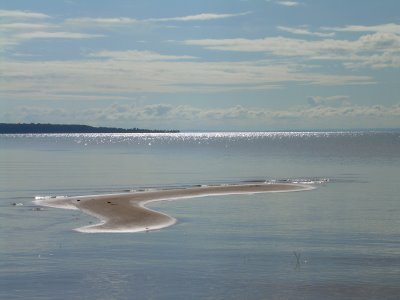
Among the environmental puzzlers we’ve had to deal with this year, the low water levels in Lake Superior is among the most curious. A few months ago, we heard the drop in the level of some Great Lakes was due to gravel mining in the ’60s. There’s rainfall patterns, of course. Chemicals, pollution, and global warming are all identified as a threat to the lake’s future.
This morning, we’ve got a new culprit: the wind, according to Jay Austin, lead scientist in the a study team at the University of Minnesota Duluth’s Large Lakes Observatory.
It blows harder on Lake Superior; about 2 miles an hour more than in 1979, according to electronic buoys. But the terrestrial wind, measured over the hill in Duluth, has not changed.
The theory is that with Lake Superior’s water being warmer, the blowing wind melts the winter ice, the water from which evaporates faster, and the water level drops.
What if, a bunch of windmills were stuck in the Great Lakes? Would they slow the wind and provide a solution to another problem at the same time?
